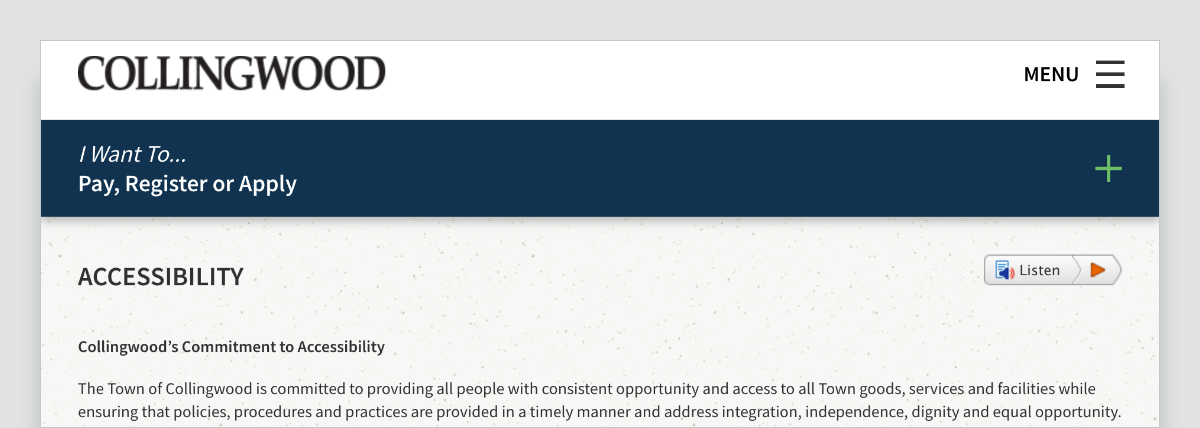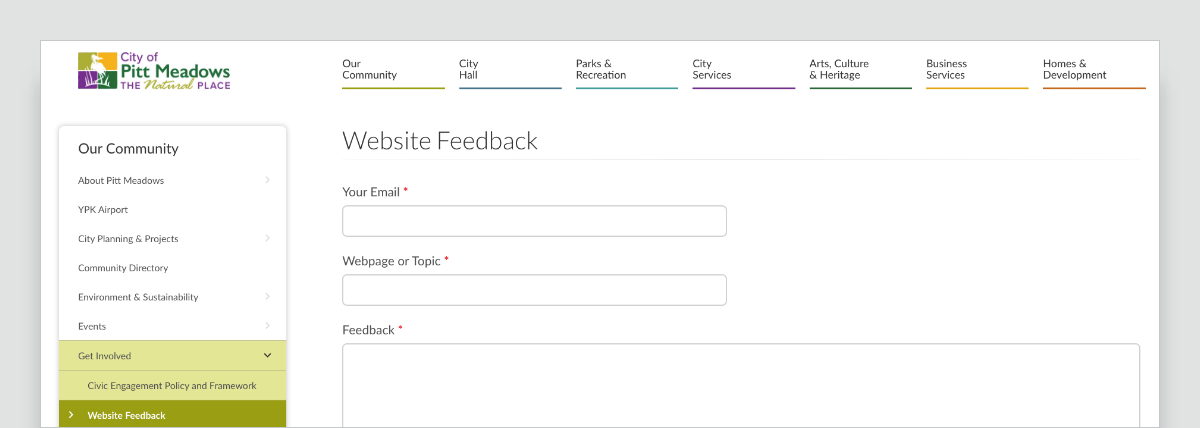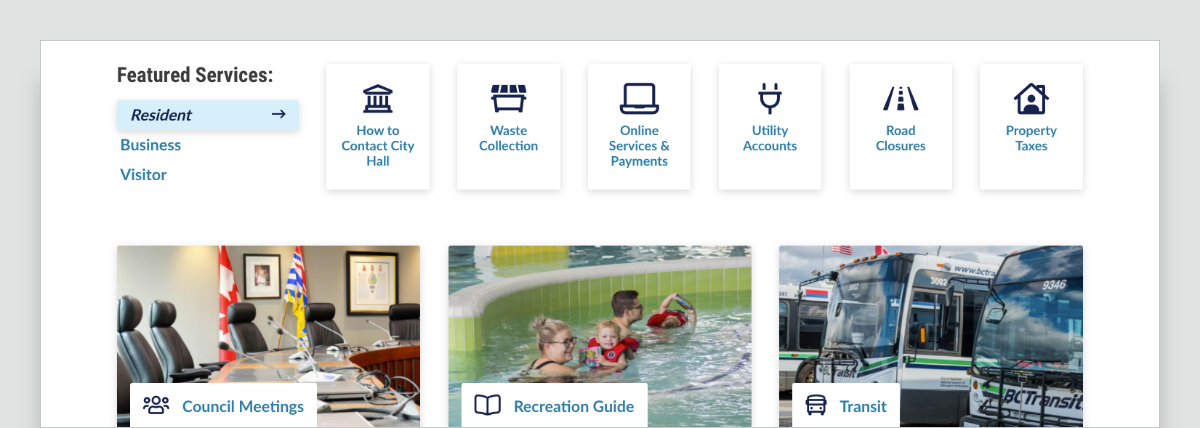
Compared to just a few months ago, audiences are more reliant on websites and have higher expectations for what they can get done online. Organizations, in turn, have taken the challenge of physical distancing as an opportunity to make digital services better.
This is especially true of governments who have stepped up their digital game to support communities. While the examples below are from the public sector, these trends apply just as readily to the private sector.
Lost revenue, along with greater demand for digital services, mean organizations need to achieve more with less. Help your audiences and staff—and make the most of your budget—with four emerging digital best practices:
1. User Experience
Design with your audiences, instead of for your audiences, with a human-centred design approach. To make cost-effective improvements, start by watching and listening closely to find out how people interact day-to-day with your website or service. User experience (UX) research and design can include surveys, analytics, interviews, focus groups and usability tests. The resulting insights help you implement, test and refine data-driven solutions for real user needs.

An online survey by the Town of Okotoks to gain insights about their website.
2. Accessibility
Be inclusive of people with diverse abilities and different contexts. Accessibility is fast becoming a legal requirement for websites, and it's the right thing to do. A website audit can show you what content, design and development changes will help you meet accessibility standards. You can get started with this quick checklist for accessible website content. By ensuring all your users can access information and services, you reduce frustration and maximize your reach.

A page addressing accessibility on the Town of Collingwood website, with a text-to-audio feature.
3. Community Engagement
Engage with your audiences to find out what is important to them in real time. Rather than one-way communication tools, websites are becoming increasingly dynamic and interactive. User engagement can include surveys, polls, contests, forums, Q & A sections and feedback forms. Hearing directly from your community, especially with physical distancing measures, helps people feel involved and means you can find out what is important to your audiences in a cost-effective way.

A feedback form on the City of Pitt Meadows website to hear directly from their users.
4. Custom Experiences
Personalize experiences for users with different goals and preferences. As digital experiences have become more sophisticated, audiences have come to expect personalized services and marketing approaches. Websites can display individualized user dashboards, curated page content based on user selections, and AI-enabled recommendations and search results. Customization can make the user experience more enjoyable and help people find the right information quickly.

A homepage for the City of Penticton that curates content differently for residents, businesses and visitors.
Improving digital services may involve a full redesign or focused changes. By listening to your audiences and looking closely at your existing technology, you can prioritize pragmatic improvements that provide a clear ROI over a multi-year timeframe.
We can help create a road map for effective next steps, based on your context. Talk with our team of experts about how to reach your digital goals.
To keep on top of website best practices, join our quarterly newsletter for project examples and actionable tips.